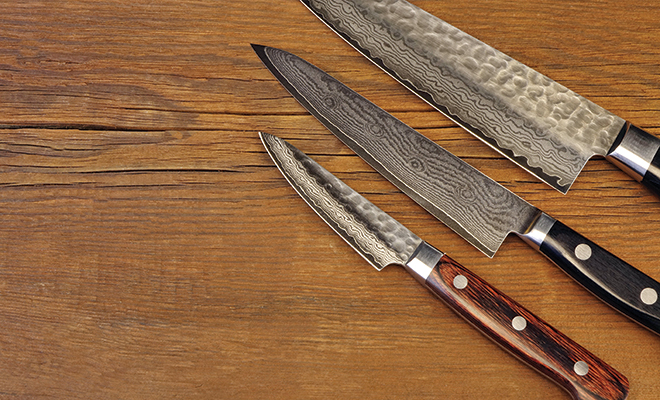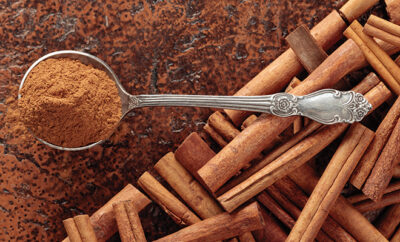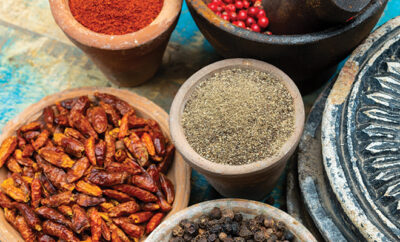
Choosing the right knife for the task
“A kitchen without a knife is not a kitchen.” – Masaharu Morimoto
If you’ve ever been to museums that display Stone Age tools, do the primitive stone knives make you wonder how mankind survived those days? Sharpened rocks were a step up from using hands, sticks or shells for cutting up food. Those simple knives became an essential tool for life, used in hunting, cooking and eating, as well as warfare and religion. Although ancient stone knives may look useless to modern eyes, remember that they were used in ancient times for ritual sacrifice.In fact, knives made from obsidian, a hard, glasslike rock made from lava that cools without forming crystals, made extremely efficient sharp blades.
In fact, obsidian blades are used today as scalpels in certain kinds of surgery. Research shows that obsidian scalpels can have sharper, more effective blades than steel scalpels. Yes, obsidian scalpels are a real thing, ideal for delicate surgery and for patients who have allergies to steel or metal. However, they are not FDA approved, and because they are very fragile, there is a chance of injury from breakage. This explains why obsidian blades are not a trend in kitchen knives.
As civilization moved from the Stone Age through the Bronze and Iron Ages, knives with metal blades became common. Short daggers were useful at the dinner table to spear and eat food, but operator error could be painful. These sharp small knives were supplanted with table knives that had rounded tips to prevent injuries. Meanwhile, food preparation required a variety of sharp-bladed knives, each one a tool with a specific function.
How many knives does a home cook need, how much do they cost, and what material should you choose? That depends on what you cook, as well as how much time you can devote to knife maintenance. You should budget about $200 to invest in a basic set of knives. Most knives are made of carbon steel, stainless steel or ceramic. All three products have their place and purpose, and you may well end up with a collection that includes all of them.
Carbon steel blades hold a sharp edge much longer than stainless steel. But carbon steel requires attention. Blades can quickly rust or stain if liquid is left on them. Acidic or salty foods can cause them to stain or pit. Carbon steel is also reactive, meaning foods cut with it may have a lingering metallic taste.
Stainless steel combines steel with other metals such as chromium or nickel. These durable, rust-resistant blades do not need to be washed and dried immediately. They are durable, lower maintenance and they look good, which makes them a popular choice.
Ceramic knives are somewhat harder than steel, stay sharp for a long time and are lighter than steel knives, making prep work easier. But they do require extra care; the inflexible blades can chip or break if you accidentally knock them against a hard surface.
If you could only have one knife, chefs would choose a chef’s knife. These knives cost about $100 and have blades that range from six to ten inches long. Their primary function is chopping and slicing, although you can manage most other tasks with them. But most cooks would be lost without a small paring knife for jobs such as peeling or dicing smaller items. You should expect to pay about $20 for a decent paring knife. Bread knives, priced around $30, are another indispensable kitchen tool. The long, serrated blade slices with a sawing motion, perfect for bread and soft-skinned fruit and vegetables. For more experienced cooks, a boning knife is essential for boning and carving meat, fish and poultry. These knives start at about $40.
If you order knives online, consider this: knives are like shoes; you’ll want to try them on before you buy. That means you’ll want to pick the knife up to see if the blade and handle feel balanced. Is it a comfortable length, size and weight?
An investment in quality knives requires knowing the best way to maintain them. Cutting boards made of hardwood are the best work surface for knives. Wash and dry your knives by hand; using the dishwasher can damage the blade and handle. If you haven’t learned to use a honing steel or sharpening stone to maintain the blade, your knives should be professionally sharpened two or three times a year.
How about storing your knives? Wood knife blocks are popular, but knives can be damaged by getting dinged while you’re inserting them in the block. If a knife is inserted in the block without being dried completely, the trapped moisture can cause damage over time. Consider installing a simple magnetic bar, the ideal way to store and display your most essential kitchen tools. ■
Sources: cnn.com and epicurious.com.







